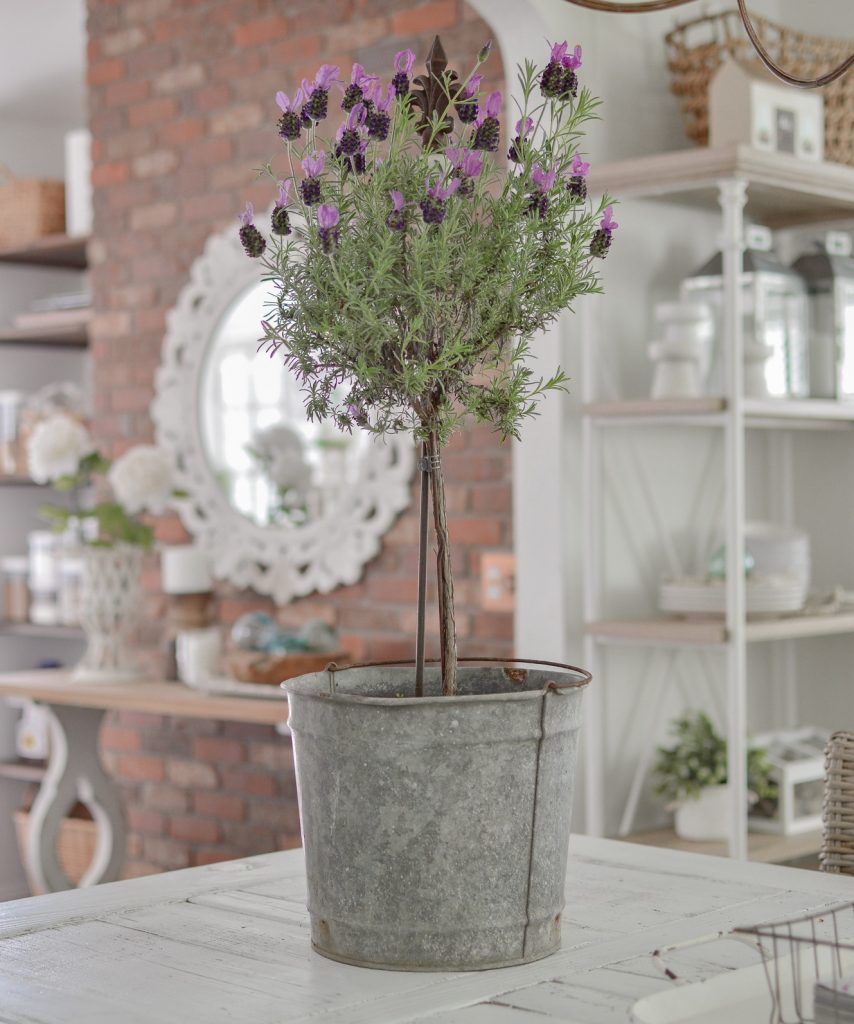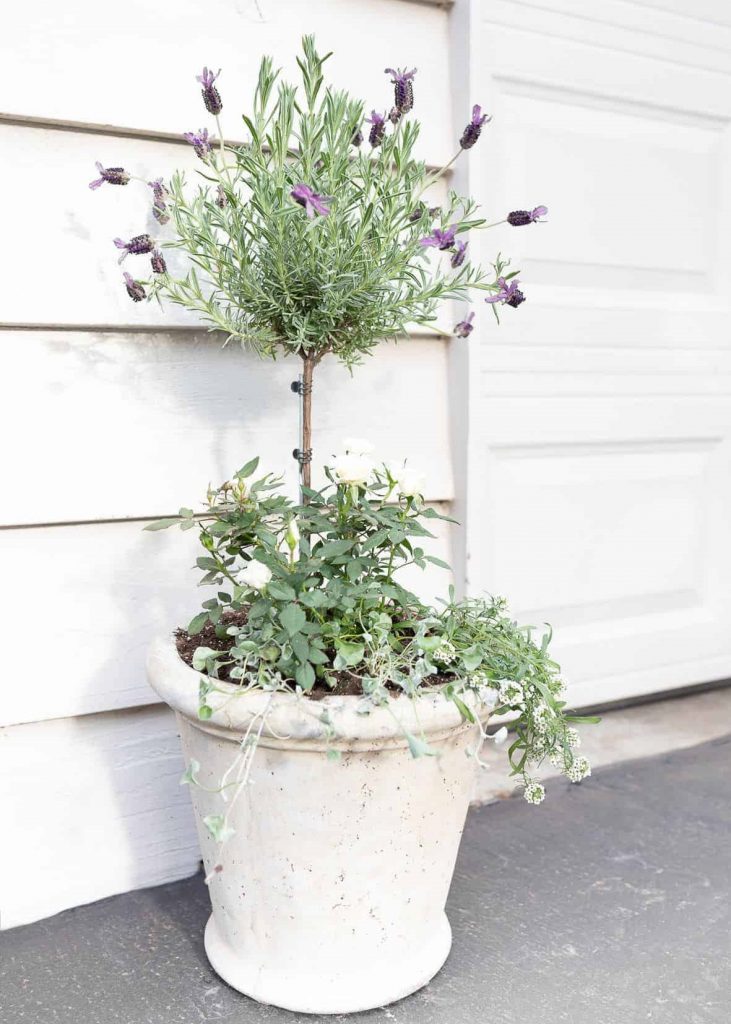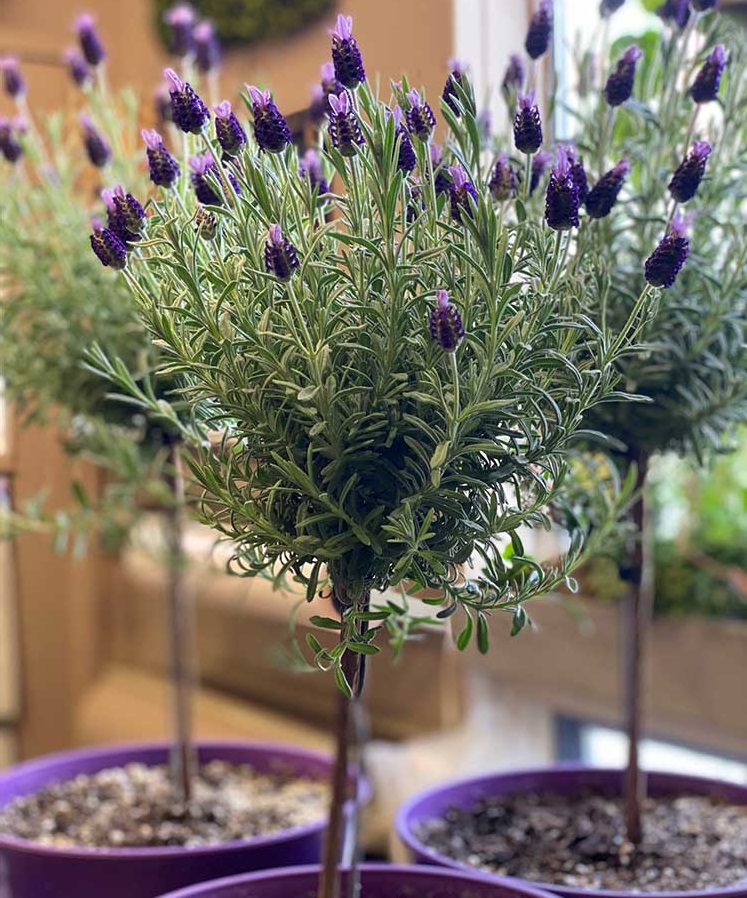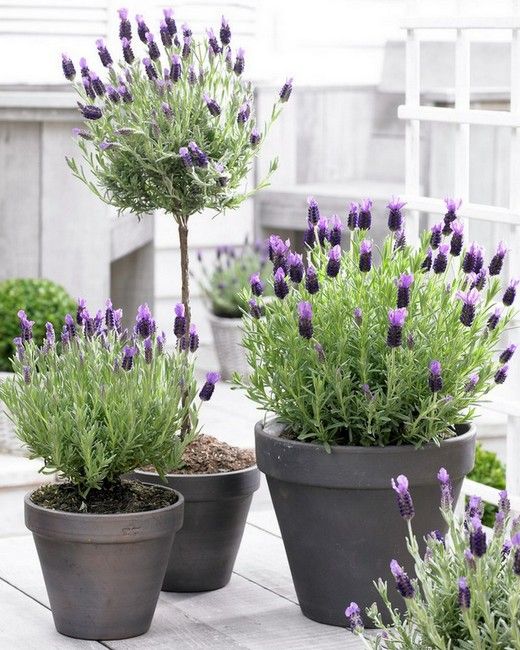

We’re here to help! Wild Yards is a completely free website that is 100% dedicated to helping you create a wildlife-friendly, sustainable yard. Read more
WildYards is reader-supported. When you buy a product through a link on our site, we may earn a comission. Every product is independently selected by our (obsessive) editors and our reviews are unbiased and objective. Read more about our mission or our privacy policy.
Gardeners have long valued lavender plants thanks to their strong aroma, silvery leaves, toddy stems, and beautiful purple flowers. However, they are not always the easiest plants to maintain due to their large size and imposing disposition. With that in mind, have you considered growing a lavender tree instead?
Like all species of lavender, these trees need plenty of sunlight, scant water, and plenty of well-draining soil or nutrient-rich compost. If you already have experience growing lavender plants, there are a few additional points to brush up on when ‘upgrading’ to trees – but they are marvelously simple to maintain.
What exactly is a lavender tree?
Lavender trees, or topiaries, are technically plants trained into tree-like shapes and growths. They are called ‘trees’ thanks to their profile and stature, though when clipped and trained into this style, lavender will only grow to around three feet at its tallest.
Lavender trees are easy to cultivate indoors and outdoors, either in pots or directly in a well-draining medium. They will grow from one long woody stem, or trunk, and are pruned specifically to grow taller, with naked stems and bushy tops, making them look like small trees.
Regardless of where you place and/or plant a lavender tree, their tops can grow to be a maximum of two feet wide – making pruning an essential practice. Keeping these trees well cut will also help you keep them to a shape you find aesthetically pleasing. As with growing and caring for lavender in general, regular pruning will also ensure that your trees continue to bloom for the coming seasons.

Can I grow any species of lavender into a tree?
You can grow lavender trees from multiple species, but the two most commonly pruned into these topiary shapes are Spanish and English lavender – they propagate wildly in the US and are among the easiest to grow from scratch.
While similar in look and scent, English lavender is much hardier than its Spanish cousin – meaning choosing the English variety is likely prudent if you wish to grow and keep lavender trees outside.
How long do lavender trees live for?
Lavender trees will only last up to five years on average, blooming after the first year – as with most species of lavender at ‘plant level’. In its more natural, bush-like shape, lavender can easily last up to 15 years – meaning while aesthetically pleasing, a lavender tree is only ever going to be a temporary fixture in your garden.
This decreased longevity is thought to be a result of training and pruning – rather than letting your lavender plant grow wild and bushy. If you’d prefer to keep lavender in your garden for as long as possible, topiary may not be of much interest.

What are the benefits of growing a lavender tree?
Many gardeners prefer lavender trees as they provide the delightful sights and smells of the base plant without the potential for overgrowth – or intensive upkeep.
Lavender has many key benefits in general, from its sweet smell to its unique look and, of course, its ability to deter certain pests, such as mosquitoes. It’s also fantastic for attracting more beneficial wildlife such as bees, butterflies, and even hummingbirds.
However, in ideal conditions, lavender can become difficult to manage if left to propagate wildly. Most varieties will grow thick and fast, tall and wide. What’s more, growing some other species too close to lavender can even prove difficult, as it can quickly take over a bed or area if not well-maintained.
Lavender trees are considerably easier to maintain from a mobility standpoint, as they will grow to waist height or taller, therefore simpler to prune and manage at arms’ length. Despite their shorter longevity compared to the base plants, lavender trees are reportedly easier to manage in terms of temperature and feeding. For example, you can simply move less hardy specimens, if kept in pots, inside during intensively hot or cold periods.
Lavender trees are also highly popular with gardeners with little space to grow crops or flowers. You may find it simple to cultivate and prune a lavender tree on a balcony or as part of an indoor arrangement in a conservatory or greenhouse. Providing you are careful not to make your tree’s soil too moist, and offer it lots of daily sunlight, these growths will thrive well in the city as well as off the land.
Many gardeners will also find that lavender trees are surprisingly resistant against drought, despite the lavender plant’s sometimes infamous care demands.

Growing a lavender tree yourself – where to start
While you can purchase perennial lavender as trees outright, growing a lavender tree from scratch allows you to shape the plant as you wish – and it’s arguably a much more rewarding process.
A lavender tree is likely to fare best in USDA zones five up through nine in the direct sun outside – and you’ll need to try and keep your soil pH between 6.5 and 7.5 for the best growth and flowering results. Soil PH is easily managed by adding elements to the growth medium and by regularly checking levels with a testing strip. Regardless, if you live in a particularly dry and sunny area, you’re likely to be the perfect host for a lavender tree.
Ideally, start by investing in a small lavender plant and prune it as soon as it flowers. This equally applies if you’re growing your own lavender from seed. Prune the side stems of your lavender until the shape resembles that of a small tree, always leaving the strongest stem in the middle, as this will be the tree’s main trunk.
To maintain the strong, upright shape of the central stem, plant and tie a bamboo stick for added support.
If you plan on growing your tree in a pot, choose a pot at least two inches wider (in circumference) than the lavender root ball. This will help the moisture spread out and ensure that the tree has plenty of room as it grows. As with all lavender plants, drainage is a must – and your pot will need lots of drainage holes to allow water to leak through.
Plant the tree in well-draining soil or nutrient-rich compost, and place your pot in full sunlight. If it is too cold outside (e.g. during winter or spring frosts), you can feel free to keep your pot indoors. Ideally, the plant will need at least six hours of sunlight daily, so choose a bright spot in your home as the sun rises or falls.
Alternatively, if you wish to plant a lavender tree directly into the ground, wait until spring or towards the start of summer – as your plant will need warm, readily-draining soil to thrive outdoors. Choose a bright spot in your garden, ideally with minimal wind. If your tree’s at risk of weather damage, consider supporting it with a bamboo cane or shielding it with a parasol to offer shade if drying out.
Caring for your lavender tree – key points to remember
Caring for a lavender tree mainly revolves around keeping it finely pruned and shaped to your standards and ensuring it’s within full view of the sun. Much like in its plant form, a lavender tree isn’t likely to need much fertilization, but careful watering is necessary.
Watering your lavender tree
Once your lavender tree has been potted and placed (inside or out), give it a little water to help it settle. Ideally, you should water it whenever the top inch of soil becomes thoroughly dry. Lavender – even in tree form – struggles immensely with root rot and fungi, meaning excessive moisture is always likely to stunt its growth.
It’s also worth noting that while many trees have long, deep-reaching roots, lavender plants are infamously short-rooted – meaning they can’t drink from deep down into the soil.
Pruning and shaping your lavender tree
To maintain the shape of your lavender tree as it continues to grow, you will need to prune it regularly. Stems will continue to grow out of the sides of the central ‘trunk’ – you will need to cut them back a few times a year, sometimes even into the tree’s adulthood.
It’s best to check your tree stems every week during the growing season and to keep your lavender blooming after its first year in the soil, don’t be afraid to prune it twice. The first prune should occur after flowering, and the second should occur at the start of fall.

Lavender trees and temperature
If potting indoors, keep your lavender tree in a relatively dry part of your home. Ideal temperatures should be between 65˚ and 70˚ Fahrenheit at all times for most lavender trees to thrive. If your home’s unlikely to get this warm, it may be worth keeping your plants outside.
There should also be plenty of air circulation in your chosen room, so try to open a window or keep doors open as you move about during the day. Drafts can cause lavender plants and trees distress – they are easily shocked – so keep your growth away from any direct inlets of air or wind.
Managing your lavender tree during winter and spring
If your lavender tree usually lives outside but needs to overwinter indoors, it is important to bring it in gradually to avoid shocking and killing the plant.
Once the temperature outside falls below 60˚ Fahrenheit, start bringing your lavender tree in for a few hours per day. Always keep it in a sunny spot in your house, ideally near a window where it can get full sunlight. Every day, you can start bringing it in for longer periods, thus helping to acclimate your tree to its new surroundings steadily.
It is likely to take up to a week for an outdoor lavender tree to fully acclimatize to being indoors, after which point it can stay inside full-time until warmer weather returns.
During the winter, you will need to rotate your plant slightly every week. Even turning it by just a quarter-rotation each time will help to ensure that the whole plant gets plenty of sunlight.
Cut back on watering your lavender tree during this time – but don’t let the soil dry out completely, and always check the top layers before watering to avoid root rot.
When it’s time to return outside in the spring, repeat the process of moving your tree into its new scenario little by little. Start taking it out for a few hours daily, increasing the time every day for a week. You should keep it in a sunny spot, away from the wind.
Once this initial week has passed, you can generally expect to leave your lavender tree outside full-time until the cold weather returns!
As the spring arrives, so too should the spring pruning! Cut the stems back by at least one-third to promote healthy growth throughout the season. Never cut on the woody part of the stems, or they will not regrow in that area.
It is also a good idea to deadhead the flowers throughout the season. You can use the dead heads in your home or garden as potpourri or insect repellent. You can easily promote a second bloom during the season by deadheading them.
Is it worth growing a lavender tree?
Many people prefer growing lavender trees as they can trim and train their plants into ornamental shapes – while still adding that famous, heady scent to any garden or rockery. Lavender plants are popular with gardeners and homeowners who want to move their plants around a lot, and those who may not have too much space for a full flower bed.
Best of all, lavender is a proven pollinator marvel, is rich in nectar, and readily blooms every spring. Lavender is a popular herb used in cuisine and medicine – but it’s most famous as a charming visual complement to any wild garden. Lavender trees may not live as long as wild plant specimens, but they can still bring character – and wildlife – to your outdoor space.
